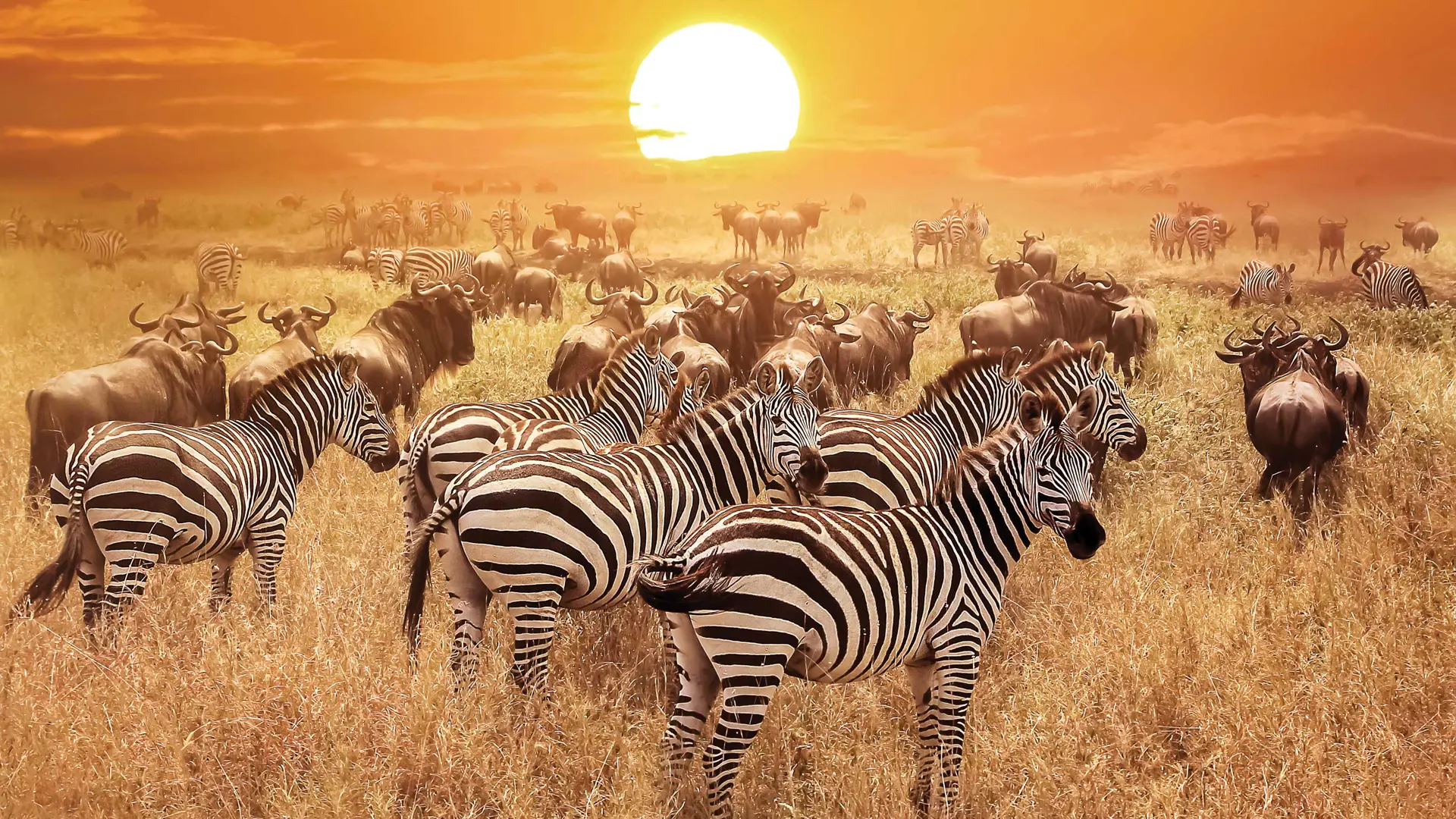
Serengeti National Park is at the heart of the larger Serengeti ecosystem, which spans approximately 25,000km² of treeless expanses of spectacularly flat short grasslands dotted with rocky outcrops (kopjes) interspersed with rivers and woodlands. The ecosystem also includes the Maswa Game Reserve (2,200km²) in the south, Grumeti and Ikorongo Game Reserves in the east, Maasai Mara National Reserve in Kenya (1,672km²) to the north, and Loliondo Game Controlled Area in the west, contiguous with Ngorongoro Conservation Unit, a 528,000ha World Heritage Site declared in 1979.

The Great Migration
The 800-kilometer trek of the immense wildebeest herd is the largest mammal migration on earth. The actual starting date may be anytime between late April and early June, when more than a million marching animals form a column up to 40 kilometers long. During the circular migration, animals deposit droppings, forming fertile soils. The timing coincides with the greening of nutritious grasses on the short-grass plains during the wet season.
Migration Highlights
- Calving Season: January to March, when thousands of wildebeest calves are born on the short-grass plains.
- Western Corridor: June to August, when the herd moves towards the Western Corridor, facing obstacles like crossing the Grumeti River.
- Dry Season Retreat: July to October, when the wildebeest retreat to the northern extension of the ecosystem.
- Return Journey: November to December, when the herd begins its return journey to the short-grass plains.
Diverse Wildlife
The ecosystem supports an incredible array of wildlife, including 2 million wildebeests, 900,000 Thomson’s gazelles, and 300,000 zebras. Other herbivores include 7,000 elands, 27,000 topis, 18,000 hartebeests, 70,000 buffalos, 4,000 giraffes, 15,000 warthogs, 3,000 waterbucks, 2,700 elephants, 500 hippopotamuses, and 200 black rhinoceroses. The park is also home to a diverse range of predators, including 4,000 lions, 1,000 leopards, 225 cheetahs, 3,500 spotted hyenas, and 300 wild dogs.
Conservation Significance
The Serengeti National Park is a haven for wildlife, with many species listed on the IUCN Red List. Conservation efforts are crucial to protect this incredible ecosystem. By visiting the park, you’ll witness one of the greatest natural phenomena in the world and contribute to the preservation of this unique environment.







 ">
">
